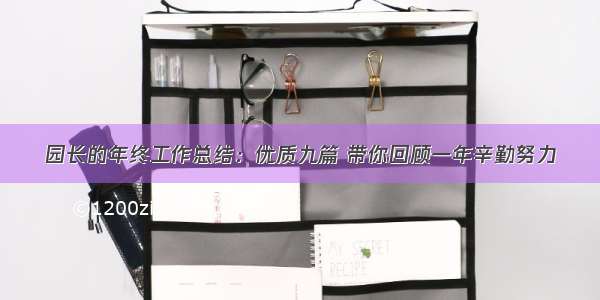![Angular: [ControlValueAccessor] 自定义表单控件](https://1200zi.500zi.com/uploadfile/img/15/482/c249a90e5f57ba279f459a16e395e8b6.jpg)
Angular: [ControlValueAccessor] 自定义表单控件
我们在实际开发中,通常会遇到各种各样的定制化功能,会遇到有些组件会与 Angular 的表单进行交互,这时候我们一般会从外部传入一个 FormGroup 对象,然后在组件的内部写相应的逻辑对 Angular 表单进行操作。如果我们只是对表单中的一个项进行定制,将整个表单对象传入显然不合适,并且组件也会显得臃肿。
<form [formGroup]="simpleForm"> <other-component [form]="simpleForm"></other-component> </form>
那么,我们能不能像原生表单一样去使用这些自定义组件呢?目前,开源组件 ng-zorro-antd 表单组件能和原生表单一样使用 formControlName 这个属性,这类组件就叫自定义表单组件。
如何实现自定义表单控件
在 Angular 中,使用 ControlValueAccessor 可以实现组件与外层包裹的 form 关联起来。
ControlValueAccessor是用于处理以下内容的接口:
将表单模型中的值写入视图/ DOM在视图/ DOM更改时通知其他表单指令和控件
ControlValueAccessor
ControlValueAccessor 接口定义了四个方法:
writeValue(obj: any): voidregisterOnChange(fn: any): voidregisterOnTouched(fn: any): voidsetDisabledState(isDisabled: boolean)?: void
writeValue(obj:any):将表单模型中的新值写入视图或DOM属性(如果需要)的方法,它将来自外部的数据写入到内部的数据模型。数据流向: form model -> component。
registerOnChange(fn:any):一种注册处理程序的方法,当视图中的某些内容发生更改时应调用该处理程序。它具有一个告诉其他表单指令和表单控件以更新其值的函数。通常在 registerOnChange 中需要保存该事件触发函数,在数据改变的时候,可以通过调用事件触发函数通知外部数据变了,同时可以将修改后的数据作为参数传递出去。数据流向: component -> form model。
registerOnTouched(fn: any):注册 onTouched 事件,基本同 registerOnChange ,只是该函数用于通知表单组件已经处于 touched 状态,改变绑定的 FormControl 的内部状态。状态变更: component -> form model。
setDisabledState(isDisabled: boolean):当调用 FormControl 变更状态的 API 时得表单状态变为 Disabled 时调用 setDisabledState() 方法,以通知自定义表单组件当前表单的读写状态。状态变更: form model -> component。
如何使用 ControlValueAccessor
搭建控件框架
@Component({selector: 'app-test-control-value-accessor',templateUrl: './test-control-value-ponent.html',providers: [{provide: NG_VALUE_ACCESSOR,useExisting: forwardRef(() => TestControlValueAccessorComponent),multi: true}]})export class TestControlValueAccessorComponent implements ControlValueAccessor {_counterValue = 0;private onChange = (_: any) => {};constructor() { }get counterValue() {return this._counterValue;}set counterValue(value) {this._counterValue = value;// 触发 onChange,component 内部的值同步到 form modelthis.onChange(this._counterValue);}increment() {this.counterValue++;}decrement() {this.counterValue--;}// form model 的值同步到 component 内部writeValue(obj: any): void {if (obj !== undefined) {this.counterValue = obj;}}registerOnChange(fn: any): void {this.onChange = fn;}registerOnTouched(fn: any): void { }setDisabledState?(isDisabled: boolean): void { }}
注册 ControlValueAccessor
为了获得ControlValueAccessor用于表单控件,Angular 内部将注入在NG_VALUE_ACCESSOR令牌上注册的所有值,这是将控件本身注册到DI框架成为一个可以让表单访问其值的控件。因此,我们需要做的就是NG_VALUE_ACCESSOR使用我们自己的值访问器实例(这是我们的组件)扩展 multi-provider 。所以设置multi: true,是声明这个token对应的类很多,分散在各处。
这里我们必须使用useExisting,因为TestControlValueAccessorComponent可能在使用它的组件中被其创建为指令依赖项。这就得用到forwardRef了,这个函数允许我们引用一个尚未定义的对象。
@Component({...providers: [{ provide: NG_VALUE_ACCESSOR,useExisting: forwardRef(() => TestControlValueAccessorComponent ),multi: true}]})export class TestControlValueAccessorComponent implements ControlValueAccessor {...}
控件界面
test-control-value-ponent.html
<div class="panel panel-primary"><div class="panel-heading">自定义控件</div><div class="panel-body"><button (click)="increment()">+</button>{{counterValue}}<button (click)="decrement()">-</button></div></div>
在表单中使用
ponent.html
<div class="constainer"><form #form="ngForm"><app-test-control-value-accessor name="message" [(ngModel)]="message"></app-test-control-value-accessor><button type="button" (click)="submit(form.value)">Submit</button></form><pre>{{ message }}</pre></div>
ponent.ts
@Component({selector: 'app-root',templateUrl: './ponent.html',styleUrls: ['./ponent.css']})export class AppComponent {message = 5;submit(value: any): void {console.log(value);}}
参考
https://blog.thoughtram.io/angular//07/27/custom-form-controls-in-angular-2.html
//04/linkup-custom-control-to-ngcontrol-ngmodel
https://juejin.im/post/597176886fb9a06ba4746d15
/shhdgit/blogs/issues/11














